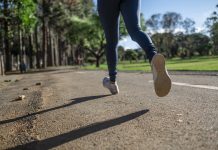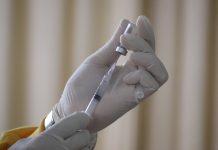THE FOUNTAIN OF YOUTH is a legendary spring that supposedly restores the youth of anyone who drinks or bathes in its waters. The 16th Century Spanish explorer Juan Ponce de León, first Governor of Puerto Rico, searched for it in America without success.
Now Professor Derek Richard, scientific director of the Cancer and Ageing Research Program (CARP), at the Queensland University of Technology and his team have discovered a drug which might have similar properties.
It’s an anti-ageing drug to stop the DNA wrecking ball which causes cancer, heart disease, type 2 diabetes cholesterol, arthritis and Alzheimer’s disease.
This drug could prevent them all, delay their onset or even reverse ageing.
“Our research identified a key protein, hSSB1 that is increased in all cancers that we have studied including breast, pancreatic, lung and colorectal cancers. When we block this protein in cancer cells they die,” Professor Richard said.
The CARP team are currently working towards understanding how this protein functions in cancer and are developing new drugs to target its function. They plan to use one of these drugs to treat patients with a range of different solid tumour cancers such as lung cancer, advanced prostate cancer and melanoma.
This same protein is also linked to other proteins that are important in ageing.
“In very exciting early experiments, we have been able to change the activity of some of these proteins that may delay the ageing process.”
“The protein hSSB1 senses genetic damage in cells. As cancer cells have one thousand times more DNA damage than normal cells, they cannot tolerate the loss of hSSB1. Our drug, DKLS02, inhibits hSSB1, making the cancer’s genetic code collapse, which in turn kills the cancer cells,” Professor Richard said.
He said the breakthrough was built upon years of research focused on the ability of single-cell organisms called archaea to survive in harsh conditions, including the boiling, sulphuric acid pools of undersea volcanoes.
“Our research revealed a ‘super hero’ protein, known as ssB1. But the real eureka moment came when we discovered that humans have this same protein, called hSSB1, in every cell of our bodies,” Professor Richard said.
“In normal cells, ssB1 is like a guardian angel that is looking after the genetic code and, if there is any damage, it rushes in to repair that damage. But, as we age, we lose parts of our genetic code, and that is the foundation for diseases such as cancer and Alzheimer’s.
“When we found that ssB1 was helping the archaea to repair its damaged DNA, we realised we might have stumbled across the basis for a new cellular treatment for humans, to control our ageing pathway and keep people healthier, for longer.
“This new drug functions by restoring the activity of the hSSB1 protein in our bodies and making cells believe that they are much younger than they actually are,” Professor Richard said.
While the drug has the potential to prevent or delay the onset of disease and illness, the primary aim is to improve quality of life.
“The big link between cancer and ageing is DNA repair. As we age, our target protein starts to function differently and allows our genome to be damaged. This damage can cause cancer,” said CARP clinical director Professor O’Byrne said.
“This drug, once fully developed, could actually be taken to protect high-risk individuals from cancer and other diseases,” he said.
Clinical trials begin next year.
The new drug is probably not the fabled fountain of youth, but it could be a valuable weapon in the fight against the diseases of ageing.
Have a Go News will keep you posted on updates of the trials as they come to hand.






























